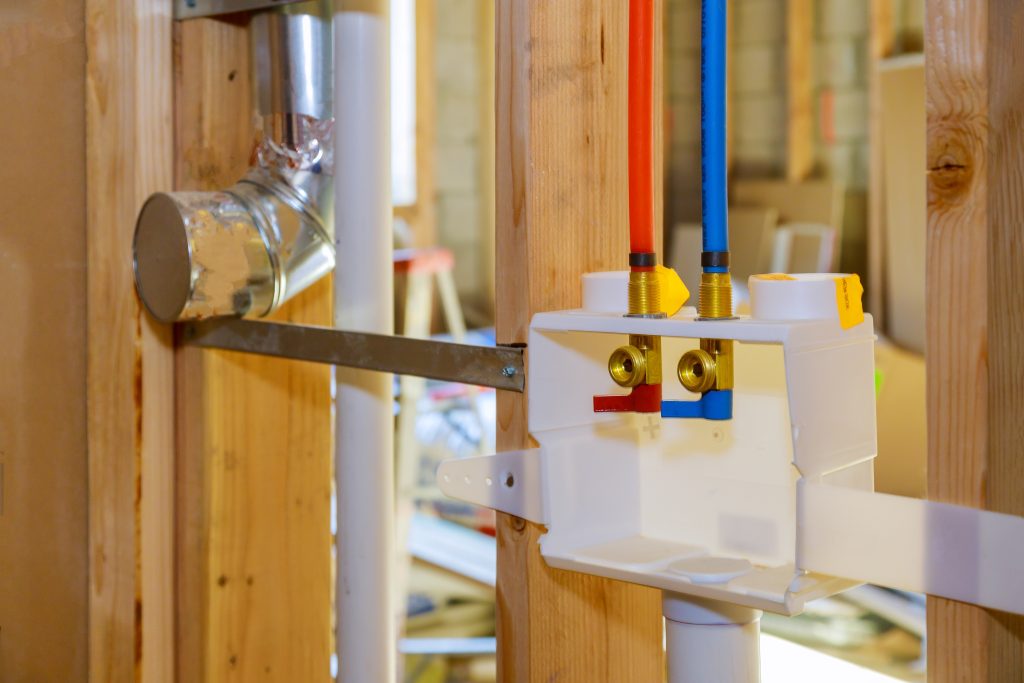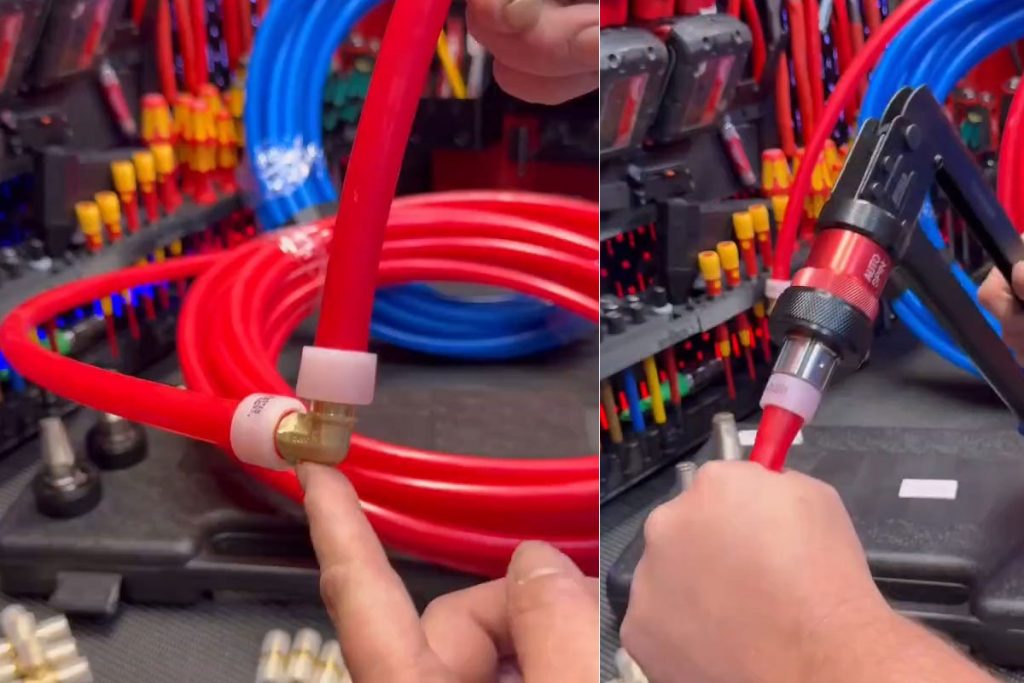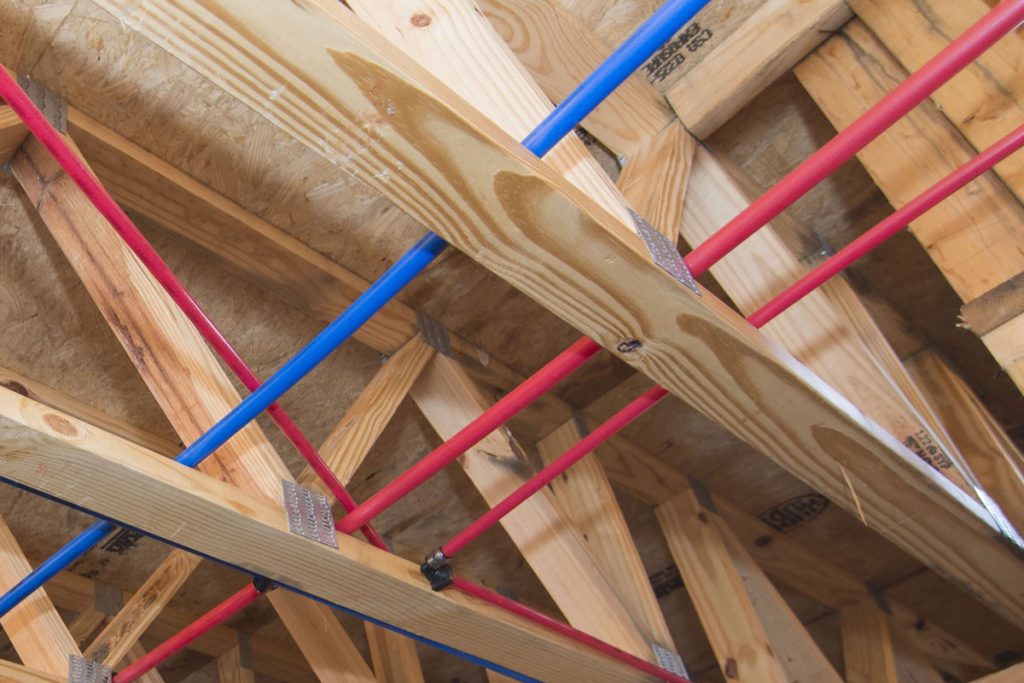To save labor costs and maintenance requirements, more and more innovative plumbing supplies have become important. An outlet box, also known as a supply box, is one of the most remarkable examples. It serves as a central part for the specific fixtures’ water supply valves and drain connections. They are used to offer a more efficient alternative installation method compared with transitional rough-in plumbing methods. A washer outlet box is recommended for a functional and safe plumbing system.
We’ll cover the key to the basic information you need to know for installing and replacing a washing machine outlet box, either for a new construction or a renovation. PlumbingSell offers a wide range selection of outlet boxes, from washing machine ones to ice maker outlet boxes. Explore different outlet box selections to find the best one for your project.
Table of Contents
What Is a Washing Machine Outlet Box?
A washing machine outlet box is a surface-mounted plumbing fixture that contains the hot and cold water supply valves and the drain connection for a washing machine. They are designed to centralize and organize the connections for a washing machine. Washing machine outlet boxes are typically made out of durable materials like plastic or metal and are getting more popular nowadays for their ability to help streamline installation, protect plumbing connections and lower the risk of causing damage to the surroundings due to washing machine box water leaks or spills.
The washing machine outlet box is usually installed within the wall behind the washer, the best place to keep plumbing connections organised and protected. The box features hot and cold water shut-off valves for easy access and quick shut-off in case of maintenance or emergencies. In some cases, washing Machine Outlet boxes with drains are used to direct wastewater into the home’s plumbing system. This will help prevent leaks and reduce the risk of water damage.
By using a washing machine outlet box, you can improve the overall safety and efficiency of a laundry room facility. There are some places that require outlet boxes for new construction and renovation to ensure proper drainage and backflow prevention. We do recommend installing them during home construction or remodelling process to have a clean, accessible setup for connecting and maintaining a washing machine.
Where Should You Install a Washing Machine Outlet Box?
Choosing the right location for a washing machine outlet box is essential for proper plumbing function and installation. We’ll introduce the key factors you need to know when determining where is the best place to install the washing machine boxes.
Height Placement
The standard washing machine outlet box height for a washing machine outlet box is typically 42-48 inches above the floor to the top of the outlet boxes. This height allows the washing machine’s water supply and drain lines to connect smoothly and safely. Additionally, a proper washing machine outlet box installation height could help prevent supply hoses from kinking, which might lead to restriction of water flow or cause leaks.
Wall Placement
The washing machine outlet boxes are normally installed behind and on top of the washer, within a wall that is secured between two vertical wall studs. They are usually placed at the center of the washer’s intended placement space to align straight with the water connections, like the water supply hoses and the drain line. This will reduce unnecessary bends or stretching that could cause kinks in pipes. The washer outlet box should also be mounted between studs to ensure secure support.

Drainage Consideration
Washing machines produce relatively high-volume water discharge, so the washer outlet box has to be connected to a properly designed drain system to prevent flooding or leakage. As most plumbing codes require, a 2-in drain pipe should be connected to the outlet box to ensure efficient draining of the washing machine. The standpipe (the vertical pipe where the washer hose connects) inside the outlet box should be at least 18-30 inches to prevent backflow issues. The washing machine p-trap installation is also a crucial part. They are typically installed below the outlet box and as close to the floor as possible.
Accessibility Concern
The washer supply box should be installed in a location that allows easy access in case of maintenance, inspections or an emergency shut-off. You may want to avoid placing it behind tight spaces like shelving, as this kind of place will restrict your reach to the water shut-off valves on the washing machine outlet box. By keeping easy access to washer outlet boxes, you can turn off the water supply or remove the washing machine easily.
Replacing a Washing Machine Outlet Box
Over some time of usage, a washing machine outlet box may become outdated and require placement. Whether due to the cracked plastic, worn-out valves, or just feeling like needing an upgrade, replacing the outlet box to ensure a more secure and efficient plumbing system is a wise choice. However, it could be challenging for those who are new to plumbing. To help you have a better understanding of how this works, we’ll cover the basic steps as a general introduction to washing machine outlet box replacement.
- Shut off the water supply and drain the water lines before you remove the old washing machine outlet box to prevent leaks. Disconnect the washing machine and move it away for easier access to the outlet box.
- Unscrew the hot and cold water hoses from the outlet box valves. A small amount of remaining water in the valve could spill out.
- If the washer outlet box is secured to wall studs, remove all screws or nails that hold it in place. Once free, disconnect the drainpipe and water supply lines at the back of the outlet box. A pipe cutter might be needed if the pipes are glued in place.
- Position the new outlet box in place, between the wall studs and at the approprate height (recommended 42-48 inches from the floor). Secure it in place using screws and ensure the level of the outlet box is aligned with the washer’s connection.
- Reconnect the plumbing of the washing machine outlet box. Attach the hot and cold supply line to the valves of the new outlet box. Connect the washer’s drain hose to the drain stub inside the new box.
- After checking all the connections of the new washer supply box, turn on the water supply and check if there are any signs of leakage. Tighten the fittings as required.
Use these steps as a guide to help you have a better understanding of washing machine outlet box replacement processes. The actual plumbing project could be easier than you expected or harder with many unexpected issues. It’s always important to have the proper tool and fei to help you solve the problems.
Conclusion
Whether you are installing or replacing a washing machine outlet box, it is a crucial step to create an efficient and reliable laundry setup. A properly placed outlet box will ensure an organized plumbing connection for a durable and smooth water supply and drainage with minimum risk of leaks or water damage. Whether for new construction or renovation, selecting the right washing machine outlet boxes is crucial.
By understanding the requirement for installing a washer outlet box from the recommended height to the drainage requirement, you are now able to tell if your washer outlet box has met the plumbing standard or has been operated effectively. PlumbingSell offers a wide selection of outlet boxes, from F1807 connection ones to F1960 ones. Explore various options to find the best fit for your project to ensure a secure and durable plumbing application.



